SLC240COM
Type 2 Safety light curtainLED Endcap
Bluetooth interface for SLC Assist App
Setup / alignment mode
Range up to 10 meters
14, 30, or 35 mm resolutions
Protection field heights: 330 to 1930 mm
Click to go to Online Catalog
To better understand how safety light curtains work we present some frequently asked questions. Find out more about their benefits, limitations, special functions, and other details in this guide. Click on the question to reveal the answer.
The safety light curtain is an array of infrared (non-visible) beams. It consists of two units:
Interrupting a beam in the array will cause the safety light curtain outputs to change. This signals the safety system to shut down the machine/hazard until the obstruction is removed and the system is reset.
The set up of the safety light curtain provides a specific protection field to detect objects. The protection field is defined by the protection height and range.
These two figures define the plane that can be monitored by the light curtain.
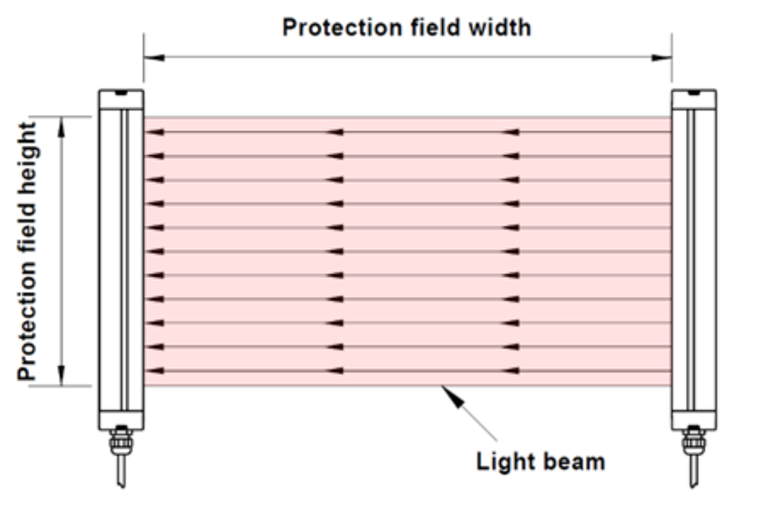
Most applications call for the light curtain to be set up vertically, creating a virtual wall to detect bodies attempting to pass through. But they can also be mounted horizontally, to detect the presence of bodies in the protection area.
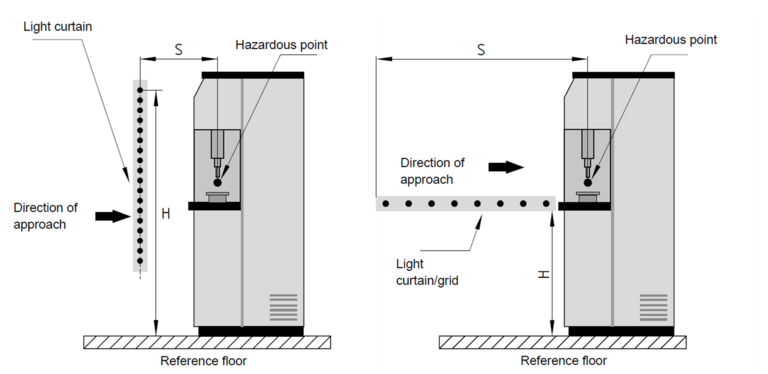
Safety light curtains are a non-separating guard used for the protection of hazardous areas. They detect the passage of objects and direct the machine to stop the hazard. Because they do not provide a physical barrier, consideration must be made to place them a suitable distance from the hazard point to ensure the hazard is stopped in time.
Safety Light Curtains (or AOPD) can be used, provided that:
Machines and applications which have non-separating primary safety devices such as safety light curtains must be evaluated to ensure the safety device is placed at the correct minimum safe distance according to ISO 13855.
This is a crucial step in selecting and installing the safety device as it must be confirmed that the hazardous condition is abated by the time an operator triggers the safety function and reaches the guarded hazard. One parameter needed for this evaluation is the stopping time of the equipment which can be obtained by conducting a Stop Time Analysis.
A stop time analysis will take a minimum of ten measurements of the response time of the machine, taking into account the reaction time of the safety device, monitoring device, output triggers, machine motors, and other factors.
ISO 13855’s general formula for the minimum safe distance is: S = (K x T) + C
where S is the minimum distance in mm, K is the human approach speed in mm/s, T is the total stopping time in seconds and C is the intrusion distance.
For safety light curtains with resolutions 14 mm up to 40 mm, the following formula should be used:
It becomes possible to exclude a safety light curtain as a viable guarding option, if the stoppage time is too great and the required minimum distance is unfeasible for the given area around the machine hazard.
For more information, see our technical article: Calculating Safety Distances
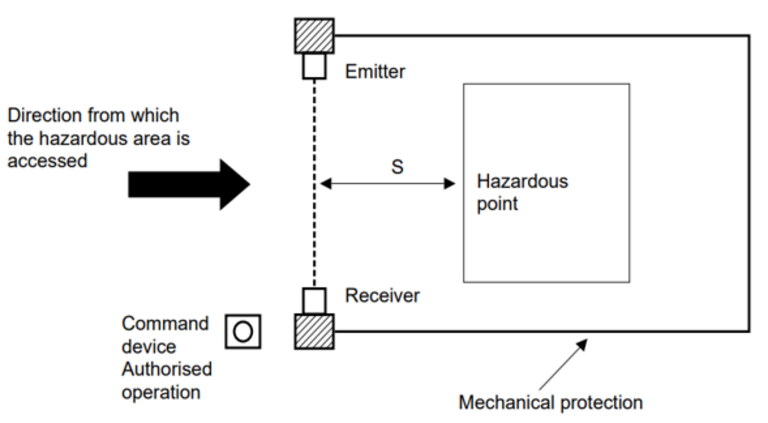
Finger safe and hand safe are terms that refer to the resolution of the Safety Light Curtain.
Resolution is the distance between two adjacent beams, and defines the object profile dimension that will be reliably detected passing through the array. EN ISO 13855 sets the biometric data for finger detection to 14 mm, for hand detection to 30 mm, for leg detection up to 70 mm and for body detection to over 70 mm.
So, a light curtain with a 14 mm resolution will detect an average sized finger, thereby making it “finger safe”, while a 30 mm resolution will detect hands and is thus “hand safe”.
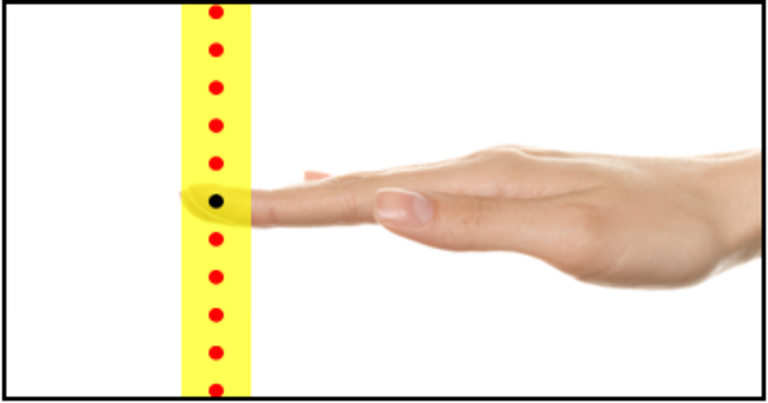
14 mm resolution
detects fingers and similar sized objects
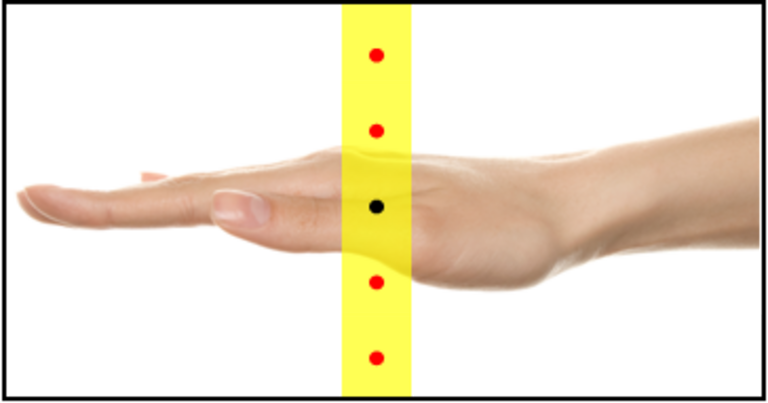
30 mm resolution
detects hands and similar sized objects
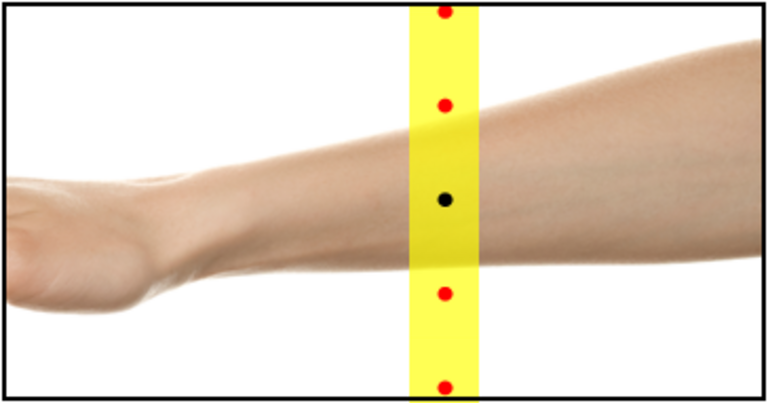
30-40 mm resolution
detects arms and larger objects
The following standards apply to Safety Light Curtains:
IEC 61496-1:2020 - Safety of machinery - Electro-sensitive protective equipment - Part 1: General requirements and tests
IEC 61496-1:2020 specifies general requirements for the design, construction and testing of non-contact electro-sensitive protective equipment (ESPE) designed specifically to detect persons or part of a person as part of a safety-related system. Special attention is directed to functional and design requirements that ensure an appropriate safety-related performance is achieved.
Visit the IEC site for more information
IEC 61496-2:2020 -Safety of machinery - Electro-sensitive protective equipment - Part 2: Particular requirements for equipment using active opto-electronic protective devices (AOPDs)
IEC 61496-2:2020 specifies requirements for the design, construction and testing of electro-sensitive protective equipment (ESPE) designed specifically to detect persons as part of a safety-related system, employing active opto-electronic protective devices (AOPDs) for the sensing function. Special attention is directed to features which ensure that an appropriate safety-related performance is achieved.
Visit the IEC site for more information
ISO 13855:2010 - Safety of machinery — Positioning of safeguards with respect to the approach speeds of parts of the human body
ISO 13855:2010 establishes the positioning of safeguards with respect to the approach speeds of parts of the human body. It specifies parameters based on values for approach speeds of parts of the human body and provides a methodology to determine the minimum distances to a hazard zone from the detection zone or from actuating devices of safeguards.
Visit the ISO site for more information
There are two Types of safety light curtains, as defined in IEC 61496, determined by how they perform.
Type 2 safety light curtains feature a periodic self-test, which may experience a failure in between test cycles. They can be used for lower risk situations, up to a SIL2 or PLc and typically feature a large sensing distance and are considered a lower cost solution.
Type 4 safety light curtains feature an active self-test that happens throughout the operation and have high tolerance to faults. They are used in high-risk applications and meet the requirements for the highest safety levels of SIL3 or PLe.
A risk assessment based on ISO 12100 or similar should be performed to determine which Type is needed. Additionally, safety standards such as IEC 61508 and ISO 13849 which evaluates the safety functions of machines, can be used to define a SIL level or Performance Level (PL) which will also determine the required Type of the light curtain.
The difference is the number of beams and the general application for the devices.
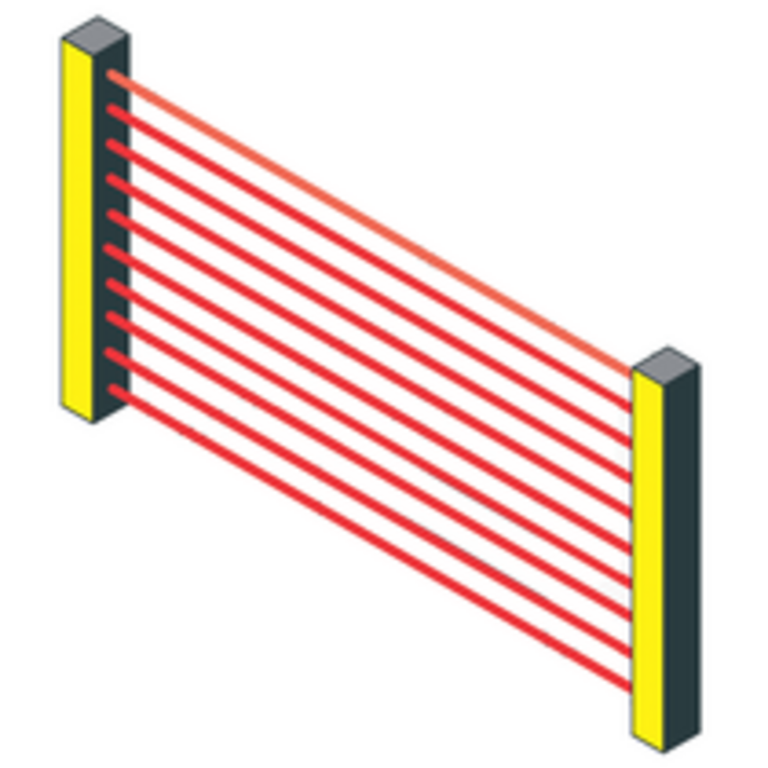
Safety Light Curtains provide a multiple beam array for use in point of operation applications. They detect fingers or hands passing through the protection field and shut the machine process down before the operator can reach the hazard. Safety Light curtains are available with resolution (space between adjacent beams) of 14mm (finger detection) or 30mm (hand detection).
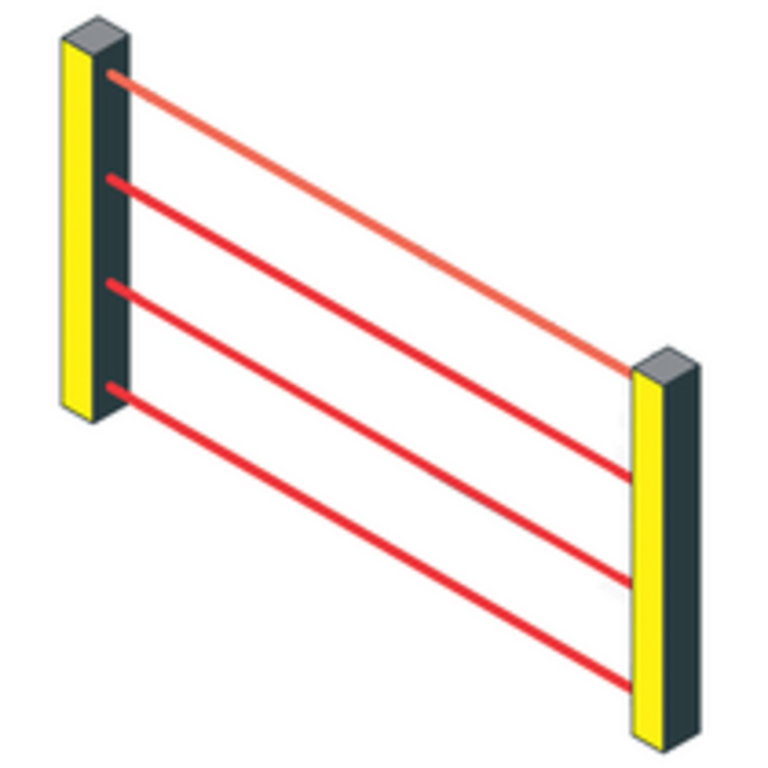
Safety Light Grids are similar to safety light curtains, but provide a 2, 3 or 4 beam array for use in perimeter guarding applications. They detect bodies passing through the protection field into a hazard zone. Safety Light Grids are available with protection field heights of 500mm (2 beam), 800mm (3 beam), or 900mm (4 beam).
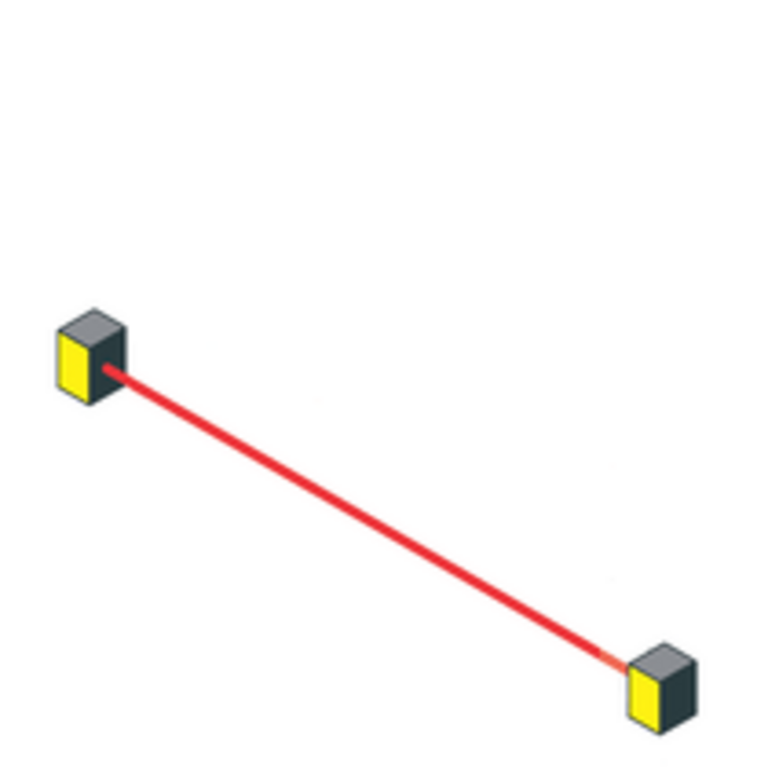
Safety Light Barrier provides a single beam for use in presence detection applications. They detect bodies interrupting the beam in a hazard area.
Safety light curtains use light beams (non-visible infrared), so mirrors can be used to deflect the beams to form a L- or U-shaped protective field around the perimeter or section of a hazard or machine.
Special considerations should be made when applying mirrors:
With every mirror used the beam strength and range is reduced by 10% or more, depending on brand and application. It is recommended to use no more than 2 mirrors.
Mirrors should be mounted to sturdy pilons or similar posts and protected being bumped into. If the mirrors are rotated or moved, then the beams between the emitter and receiver will become misaligned.
Safety laser scanners and safety light curtains are both safety devices used in industrial settings to protect operators from hazards, but they operate differently and suit different applications.
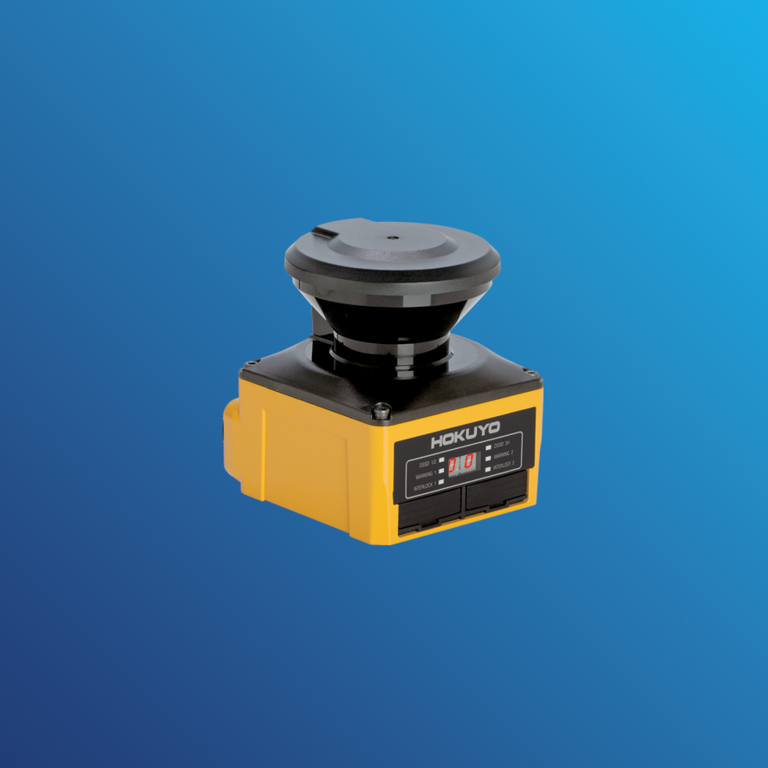
Safety Laser Scanners use laser technology to create a customizable protective field around a specific area. These devices emit a series of laser beams in a 2D, fan-shaped pattern, typically covering up to a 270-degree angle. The scanner continuously monitors the area within this field. When an object or person enters the designated protective zone, the laser scanner detects the intrusion and sends a signal to stop or slow down the machinery. These scanners are highly adaptable, as their detection zones can be precisely shaped and programmed. They are often used for mobile equipment, like autonomous guided vehicles (AGVs), or in complex workspaces with irregular layouts, where flexibility and detailed zone control are essential.

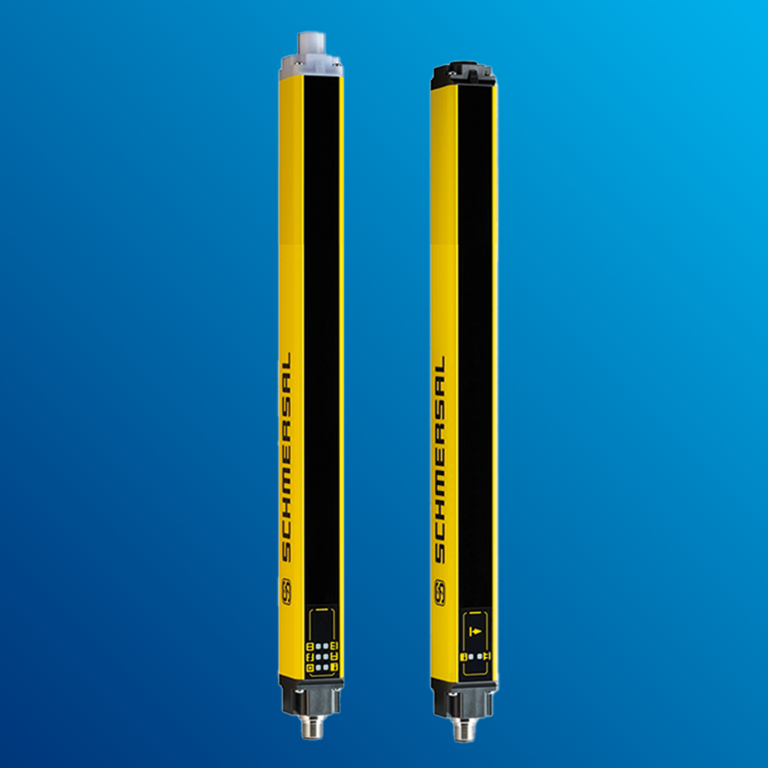
Safety Light Curtains consist of a series of infrared light beams arranged between two units: a transmitter and a receiver. These beams form a "curtain" that, when interrupted, triggers a response, usually stopping the machinery to prevent accidents. Light curtains are commonly used in applications where operators need frequent access to machinery, such as robotic work cells or assembly lines. The beams are tightly spaced, creating an invisible wall that detects any object larger than the beam spacing. While they provide excellent protection for linear zones, light curtains are less versatile in covering irregularly shaped areas compared to laser scanners.
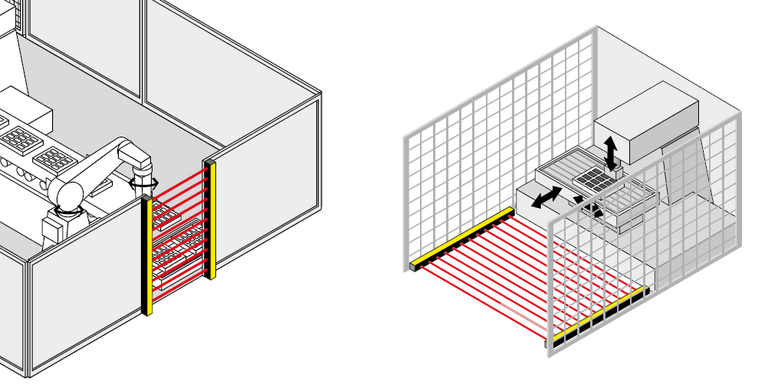
In summary, the main difference lies in their coverage and application suitability. Laser scanners are ideal for complex, customizable zones and mobile applications, while light curtains are well-suited for protecting defined, linear areas that require frequent operator access. Both devices are integral to enhancing safety but serve distinct roles based on workspace configuration and operational needs.
Safety light curtains are a viable safeguarding option for point of operation or perimeter guarding. Choosing the right one is not terribly complicated, once a thorough risk assessment is performed. It helps to define the Type, Resolution, Protection field, and Special operation modes needed for your application.
Type
There are two Types of AOPD, defined by IEC 61496.
Type 2 features a periodic self-test and are used for lower risk situations, up to a SIL2 or PLc and typically feature a large sensing distance. They are considered a lower cost solution.
Type 4 features an active self-test that happens throughout the operation. Since they have high tolerance to faults, they are used in high-risk applications and meet the requirements for the highest safety levels of SIL3 or PLe.
The risk assessment will determine the safety integrity level (SIL) or Performance Level (PL) you need to achieve.
Resolution
The resolution is the distance between consecutive beams, or the size of the object that will be detected passing through the protection field. This size, typically noted in millimeters, determines if the device can be used for point of operation applications or for perimeter guarding. The resolution can affect how close the protective field needs to be to the hazard.
Protection field
The protection field is the plane in which the infrared beams travel from emitter to receiver which will detect an object passing through. It should be of sufficient height and width (range) that operators cannot reach over, reach under, or go around to reach the hazard.
Special functions and operation modes
There are many possible special functions and operation modes available. A large hazard area may need a double acknowledgement reset. If materials need to pass through the protection field yet still prevent personnel from crossing, then blanking or muting may be necessary.
For more detailed information, please see our technical article: Selection Guidelines for Safety Light Curtains
Blanking and muting are two distinct safety functions in light curtain systems used in industrial settings to manage safety without halting productivity unnecessarily. Both are essential in applications where certain objects or materials must pass through the light curtain without triggering a safety response.
Blanking allows specific light beams in a safety curtain to be intentionally deactivated or ignored, enabling objects of a predetermined size or shape to pass through without interrupting the machine. There are two types of blanking: fixed and floating. Fixed blanking permanently deactivates specific beams, typically for an obstruction in the field that does not move such as a conveyor belt. Floating blanking ignores obstruction of one or more beams to permit movement within a specific area, allowing objects to pass through shifting areas. Floating blanking is used where material entering the protection field may move over time, like wire spooling onto a reel. Blanking requires careful configuration to ensure that only items or parts enter, as it allows gaps in the protected area and floating blanking can effectively change the resolution.
Muting is a temporary bypass function where the entire light curtain deactivates momentarily to let objects pass through without triggering a shutdown. This function uses additional sensors that detect the object and initiate muting for a brief period, after which the light curtain resumes its full safety function. Muting is commonly used in automated systems where materials need to enter or exit a hazardous area safely, such as in palletizing operations or robotic loading and unloading zones. By using muting, operators ensure that only designated items, rather than unauthorized personnel, pass through.
In summary, blanking is used when selective beams need deactivation, while muting provides a full, temporary bypass. Both functions enhance productivity by allowing controlled, safe material flow through safety barriers, reducing unnecessary downtime in automated industrial processes.
Schmersal offers several options for status indicators in our Safety Light Curtains
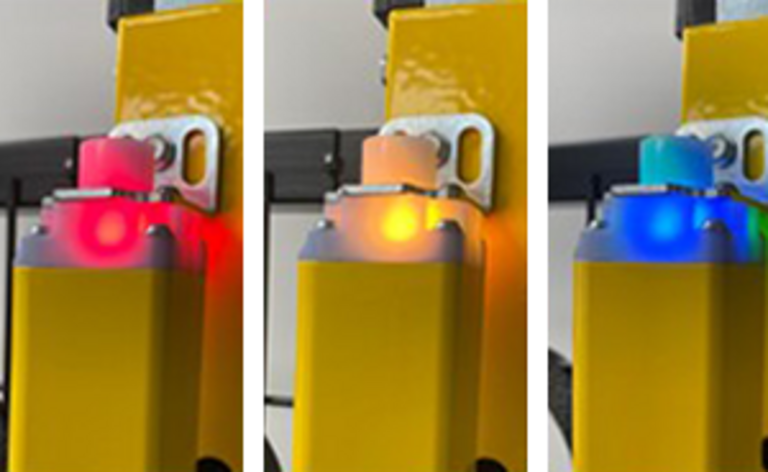
The end cap of the receiver unit is molded from a semitransparent plastic that is illuminated by LED. This means the operating status is clear and can be seen from a distance.
Various colors indicate status:
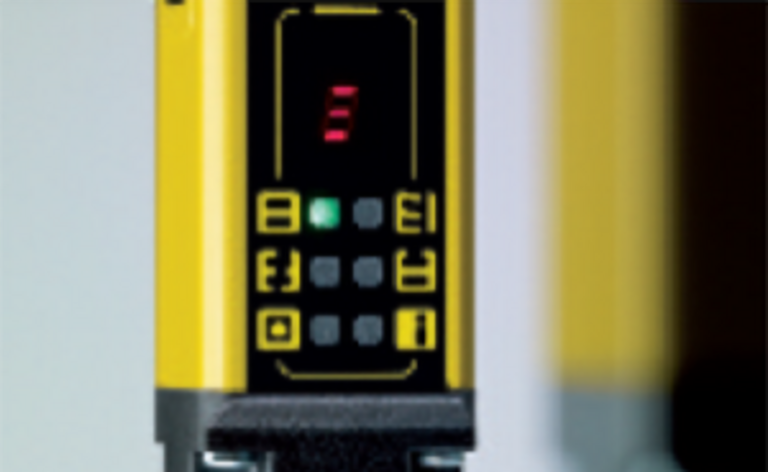
For our SLC440 and SLC445, we offer a seven-segment display and 6 led status indicators built into the face of the receiver unit.
The seven-segment display indicates alignment and signal strength in set-up mode. During programming, it displays the codes to indicate functions and activation. During operation, it will display error codes.
The 6 LED status highlight several icons for OSSD ON (green), OSSD OFF (red), Restart (Yellow), Signal reception (orange), Blanking (blue), and Information (yellow-green)
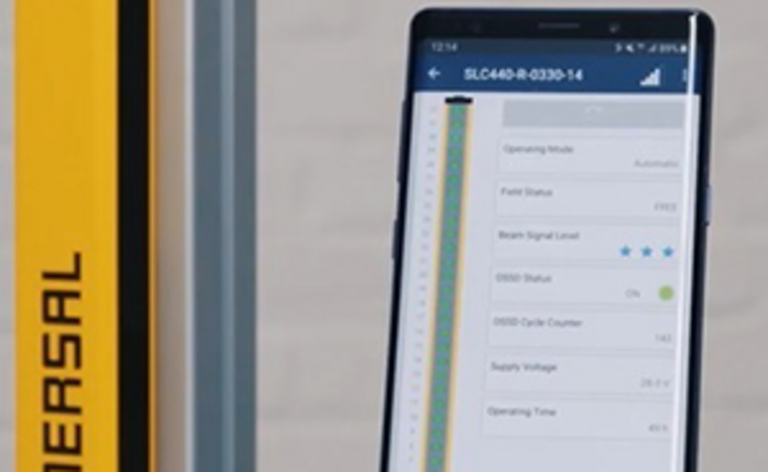
Now a standard feature integrated in all SLC440 and SLC440COM, BLE uses the BluetoothTM Low Energy system which provides secure data transmission up to 5 meters. The data transmitted is accessible by the Schmersal SLC Assist App, available for Android and iOS smartphones and tablets.
Advantages of the data interface:
There are several methods to align a safety light curtain:
1: Measuring corner to corner
if you take the measurement in an X pattern, the two measurements if equal will mean that the emitter and receiver are parallel and square.
2: Visible laser alignment tool
Many manufacturers offer an attachment to provide a visible laser to align the emitter and receiver. Place the device at the top and bottom of both the emitter and receiver to ensure perfect alignment.
3: Integrated alignment tools
Schmersal offers several built-in features to assist with alignment:
The 7 segment display available with the SLC440 and SLC445: In setup mode the 7 segment display will show three lines to indicate alignment level.
Our light curtains have a LED endcap: during setup mode the endcap will flash until the emitter and receiver are aligned properly.
Bluetooth interface available on SLC440COM and SLC440: The light curtain will send live data to your phone or tablet and can indicate alignment status, beam by beam, and a three-star rating on the quality of the signal strength.
Here is a short video on Safety Light Curtain Alignment 101:
The operating modes of an AOPD must be defined according to the risk analysis of a machine.
Automatic / Protective mode
The protective mode switches the AOPD outputs to an ON state (protection field not interrupted), without external release of a switching device. This mode of operation creates an automatic machine restart if the protection field is not interrupted and should only be selected with the restart interlock of the machine.
Restart interlock (manual reset)
The restart interlock (manual reset) prevents an automatic enabling of the outputs (OSSD's ON state) after switch-on of the operating voltage or an interruption of the protection field. The system switches the outputs only to an ON state when an external command device generates an enabling signal at the restart input (receiver).
Restart interlock with double acknowledgement/reset
In applications with access monitoring, a complete overview of the hazardous areas is often not possible; despite that, a reset of the command device for the restart interlock outside of the hazardous area by third parties is enabled at all times. This hazardous situation of an unexpected start-up can be avoided by means of a double reset, i.e. integration of one command device inside and one outside the hazardous area.
Cyclic Mode
Cyclic Mode, also known as Presence Sensing Device Initiation (PSDI) allows the safety light curtain to be used as a machine control device. The programming of the machine expects the protection field to be interrupted between machine cycles, to place or remove materials. The machine will initiate the next cycle once the beams are restored. This function should not override the primary function of the curtain - if the protection field is interrupted during the machine cycle, the hazardous motion is stopped, and the machine is put into an interlock state until the safety is reset.
Setting mode
Before commissioning an AOPD, the best possible alignment of the sensors should be determined. The set-up mode visualises the set-up quality during the installation of the sensors. Visualisation is via a 7-segment display, a status display or optionally via a smartphone with the "SLC Assist" app.
Regular inspections
A regular visual inspection and functional test, including the following steps, should be performed:
Half-yearly inspection
The following items must be checked every six months or if a machine setting is changed.
In this presentation we highlight the fundamental concepts behind these non-separating protective devices to equip with you with the knowledge to select the correct light curtain for your application and understand the advantages of Schmersal’s product lines of Safety Light Curtains.
Presented by: Dawn Etta | Duration: 1 hour
Here are the various series of safety light curtains, grids, and barriers available from Schmersal.
Hover on the images to find more details. Click to get technical information from our online catalog.